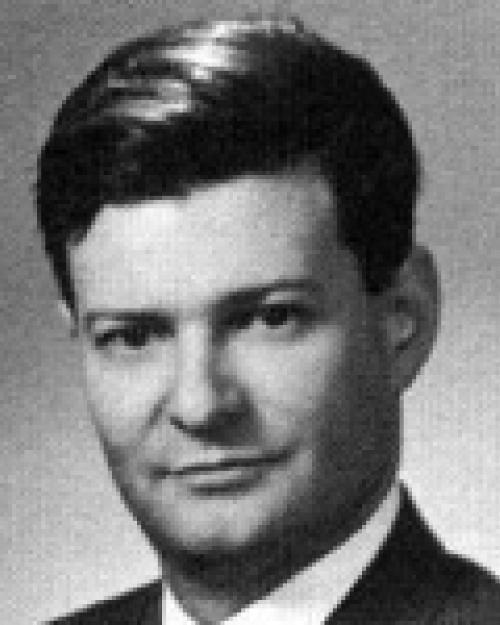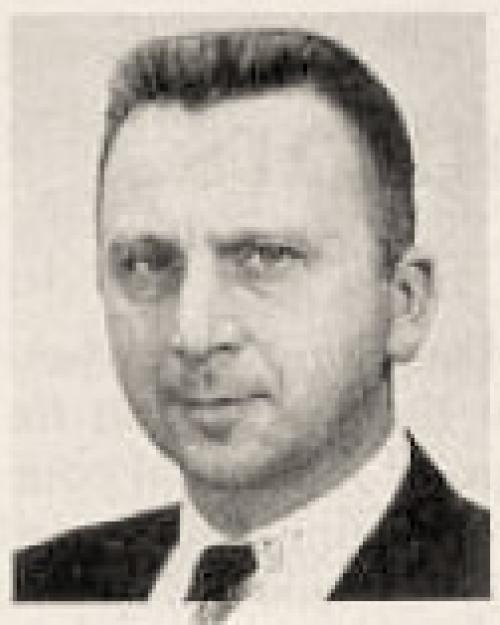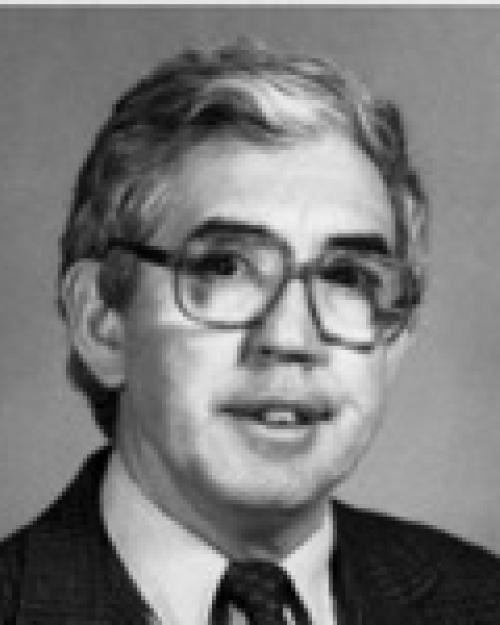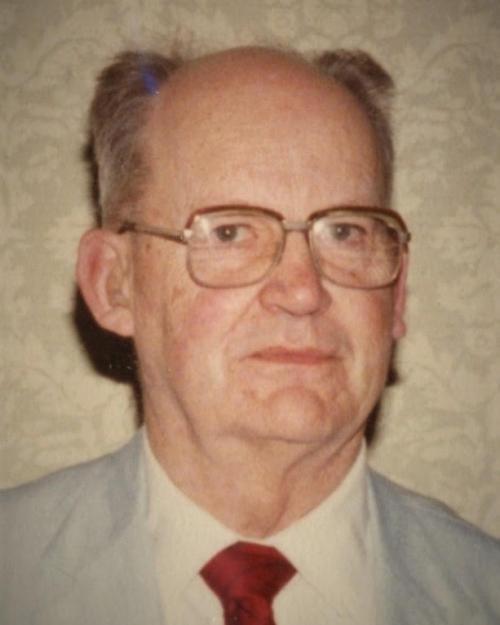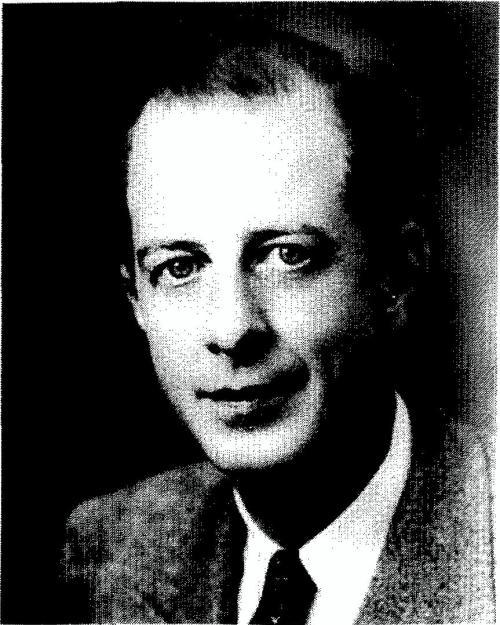-

James M. Cloeren
-James M. Cloeren – Spacecraft Oscillator Designer 1934 – 2001 James M. Cloeren, a spacecraft oscillator designer at The Johns Hopkins University Applied Physics Laboratory (APL), Laurel, Md., died Oct. 30, 2001 from injuries sustained in the crash of an experimental plane near Westminster, Md. He was 67. Born in Darby, Pa., he was a resident of Westminster, Md. Mr. Cloeren served in the Navy from 1952 – 1956 as an electronic technician and earned an associate in arts degree from Montgomery College, Rockville, Md., in 1963. He worked for Tracor, Inc. (formerly Sulzer Labs, Inc.) from 1956 – 1967 where he was responsible for designing and manufacturing crystal oscillators and clocks. From 1967 – 1975 he worked for Austron, Inc. and managed their Washington, D.C. division with responsibility for its time and frequency products. He spent the next three years at T. E. Corporation working with time/frequency and navigation products for the scientific and military communities. At Satellite Navigation Systems, Inc., he served as the vice president for manufacturing from 1977 – 1981. He spent a year at Advanced Navigation, Inc., as vice president for manufacturing. Mr. Cloeren joined APL in 1982. He was a specialist in the development of ultra-stable oscillators used for spacecraft navigation, timekeeping, and radio science experiments on unmanned scientific satellites. As systems engineer he led the team that designed and built the precision quartz oscillator for radio science measurements to be conducted by the CASSINI mission to Saturn. A testimony to his work is illustrated by a quote from NASA’s Jet Propulsion Laboratory who described the CASSINI oscillator as the “finest in the solar system.” A senior engineer at APL, at the time of his death, Mr. Cloeren was a section supervisor in APL’s Space Department and also served on the Technical Program Committee of the Institute of Electrical and Electronic Engineers – International Frequency Control Symposium. Mr. Cloeren and fellow APL co-worker, Jerry Norton, built and co-owned the 1999 Titan Tornado II, two-seat, single-engine aircraft they were flying at the time of the accident. Mr. Cloeren is survived by his wife, LaHoma; a daughter, Cathy of Boca Raton, Fla., a sister, JoAnn Raeder of Laurel, Md., and three grandchildren. His son, David, predeceased him in September, 2001.

Herbert P. Stratemeyer
-Herbert P. Stratemeyer – A Pioneer in Quartz and Atomic Frequency Standards 1931-2001 The frequency control community lost one of its pioneers in the field of quartz oscillators and rubidium atomic clocks when Herbert P. Stratemeyer died on November 20, 2001. Herb was born in 1931 in Mainz, Germany. Although too young to have participated actively in World War II, he nevertheless suffered along with the rest of the civilian population in its later days and aftermath. He received a Diplom Physik degree from the University of Mainz in 1954. During that time, he participated in early single sideband amateur radio experiments with Art Collins and others. Herb began his career in frequency control in the quartz crystal industry in England. In 1954 he immigrated to the United States to accept a position as a Development Engineer at the General Radio Company in Cambridge Massachusetts. At that time, General Radio was the leading manufacturer of electronic instruments. He worked on quartz frequency standards and quartz crystals for filter applications. His first solid-state oscillator, the Model 1115, set new performance standards for low phase noise. Herb Stratemeyer became a U.S. citizen in 1962. In the early 1960’s, Herb’s work turned to atomic clocks, specifically rubidium atomic frequency standards that were just becoming commercially available. Much basic investigation was necessary to develop these devices into practical products, and to devise the processes necessary for manufacturing their lamps and cells. His other contributions included work on frequency synthesizers and quartz crystal measuring systems. The emphasis on rubidium frequency standards at General Radio soon shifted to military and space units. One such device was the NASA Spacecraft Atomic Timing System (SATS), which was the first rubidium clock developed and qualified for space. Another was the physics package for the Collins AFS-81 ruggedized rubidium frequency standard (RFS) used for many years by the U.S. Navy in the Verdin VLF communications system. Other projects included RFS designs for missile and tactical aircraft applications. Preliminary work was also done on rubidium clocks for the GPS program. Many of those units had performance equal to or better than most such devices today (although they were much larger and more expensive). In particular, the work at General Radio led to the eventual development of the ultra-stable rubidium clocks used in the Block IIR and IIF GPS satellites. Herb retired from General Radio (then GenRad) in 1975, but continued to consult in the field of atomic clocks at EG&G in the early 1980’s. During his retirement, he became a computer “guru” in the 1980’s and 1990’s. His other interests included gunsmithing, hunting and photography. Herb was an active participant in the frequency control community, regularly attending the Frequency Control Symposium during the Atlantic City era, and contributing to the watershed 1964 IEEE-NASA Symposium on Short-Term Frequency Stability. He was also a loyal IRE/IEEE member. Throughout his career, Herb was a mentor to the next generation of “clock engineers”, sharing both his knowledge and work ethic. Herb was an “engineer’s engineer”, displaying exceptional technical judgment and keen insight directed toward making things work. He was a man of great intellect with many talents who excelled in whatever he did. He was also a man of great professional and personal integrity who had a positive influence on all the people and programs he worked with. Those of us whose lives he touched will miss him greatly.
Robin P. Giffard
-Robin P. Giffard – Innovator and Architect of Atomic Frequency Standards 1941-2001 The time and frequency control community lost one of its most innovative leaders on Sunday, May 6, 2001, when Robin Giffard died while hiking in the Palo Alto, California area. Dr. Giffard was born on February 6th, 1941, in Shrewsbury, U.K. He received a B.A. Physics (1st Class Honors), M.A. Physics, and D-Phil, all from the University of Oxford. His doctoral work was done at the Carendon Laboratory Oxford University and addressed measurement problems in the study of nuclear magnetism at low temperatures. Following his work at Oxford, Robin also held positions at UC San Diego, Clarendon Laboratories Oxford, and Stanford University. During this period his work included studies on cryogenic gravitational wave detectors, noise thermometry at ultra-low temperatures, and SQUID-Magnetometers. In 1980 Robin joined the technical staff at Hewlett-Packard Laboratories (now Agilent Laboratories). At the time of his death, Robin was the Department Scientist for the Precision Instrumentation Laboratory. His specialties included: low noise electronics, atomic frequency standards, time-transfer using GPS, high-stability oscillators, digital filtering, and measurement techniques. While at Agilent, Robin was heavily involved in the development and design of the Mercury Ion standard, and was one of the principal architects and designers of the Agilent 5071A Primary Frequency Standard. In recent years, his work involved development of time-transfer techniques that are effective over wide areas using GPS SPS. Working with other scientists at NIST and USNO, Robin was the principal investigator of the limitations, including ionospheric effects, on the ability to achieve wide-area time synchronization over continental distances. For his work on atomic frequency standards, Robin shared the AIP Industrial Physics Award with his colleagues Dr. Len Cutler, and Dr. Curt Flory. He was also the co-winner of 3 IR&D 100 awards. He was the inventor or co-inventor on 6 US patents. Robin authored or co-authored over 55 technical papers and review articles. Robin was active in both the IEEE and ION as a frequent contributor to technical symposia in both organizations. Robin was also a member of the Technical Program Committee of the IEEE International Frequency Control Symposium. Robin is survived by his wife Rona, two children, a brother and a sister. Those who worked with Robin will remember him as a quiet, gentle man with a dry British sense of humor, and outstanding technical brilliance.

Daniel J. Healey, III
-Daniel J. Healey III – A Pioneer in Low Noise Radar Exciter Technology 1922-2000 The time and frequency control community lost one of its pioneers on November 24, 2000 when Daniel Healey passed away. Dan made many important contributions to the design and understanding of low noise oscillators as well as to low noise radar exciter technology. He will be missed by his friends and colleagues.
Dan was born in Baltimore, Maryland on November 9, 1922. He received the Bachelor’s degree in electrical engineering with honors from Johns Hopkins University in 1947, following a two-year interruption to his studies when he served in the U.S. Naval Reserve as an electronics technician. He did graduate study at Johns Hopkins from 1949 to 1954. In 1947 he joined the Westinghouse Defense Center in Baltimore Maryland. He retired from Westinghouse in the mid-1980’s as an Advisory Engineer. For most of his career, he was engaged in the design and development of stable frequency sources for airborne radar applications. The mechanization of the AWACS STALO, exhibiting state-of-the-art spectral purity, serves as one of many tributes to Dan’s inventiveness and expertise. Over the past several years, very successful techniques have been developed for oscillator noise reduction involving carrier-nulling as a means for enhancing signal noise side-band level and detectability. A technical paper by Dan Healey and Dan Buck given at a 1964 IEEE-NASA Symposium on Short-Term Frequency Stability describes their successful use of the same technique for use in measurement apparatus over 36 years ago! According to Mike Driscoll, who worked with Dan on a variety of projects at Westinghouse for many years beginning in 1966, everyone who worked with Dan directly or knew of his work acknowledged the depth and breadth of his technical expertise. Mike has stated that his initial work assignments with Dan constituted invaluable learning experiences.
Helmut Hellwig
-Helmut Hellwig – The Time and Frequency Control Community Loses One of its Pioneers and Leaders 1938-2000 The time and frequency control community lost one of its leaders on July 22, 2000 when Helmut Hellwig passed away. Helmut made many scientific and management contributions to our field and he will be missed by his many friends and colleagues. Helmut Hellwig was born on May 7, 1938 in Berlin, Germany. His professional education in Germany included a 1963 Master of Science degree in physics and a 1966 Doctorate in electrical engineering, both from the Technical University of Berlin. During that period Helmut was a Researcher at the Heinrich Hertz Institute in Berlin. He immigrated to the United States in 1966 and became a U.S. citizen in 1972. Dr. Hellwig was a research physicist in the field of atomic frequency standards for the U.S. Army Electronics Command in Ft. Monmouth, NJ between 1966 and 1969, and a Time and Frequency Division Research Physicist, Section Chief and Associate Division Chief at the National Bureau of Standards (NBS) in Boulder, CO between 1969-1979. While there, Helmut established an organizational culture of advanced research in the field of atomic clocks which persists to this day. In 1979, Helmut became the President of Frequency and Time Systems, Inc. (FTS, now part of Datum, Inc.), a research and manufacturing company in Beverly, MA. He led the successful qualification and production of satellite cesium clocks for the Global Positioning System (GPS). In 1986, Helmut returned to NBS as Associate Director. Then, in 1990 he was appointed Director of the Air Force Office of Scientific Research, Bolling Air Force Base, DC, where he was responsible for managing the entire basic research program of the U.S. Air Force. He built a strong research infrastructure carried out by approximately 6,000 researchers in Air Force Laboratories, universities and industries. In 1996, Helmut was appointed Deputy Assistant Secretary for Science, Technology and Engineering, Office of the Secretary of the Air Force (Acquisition) in Arlington, VA. In that position, he was responsible for all Air Force investments in science and technology. Helmut retired from this position in 1999. He was a Fellow of the IEEE, a Member of the American Physical Society and Sigma Xi. He was also a member of the International Scientific Radio Union (URSI), the International Radio Consultative Committee (CCIR) and the International Astronomical Union (IAU) Helmut was very active in IEEE and frequency control committees, including the I&M and UFFC Societies. He was an Associate Editor of the Transactions on UFFC, Chairman of the I&M Technical Committee on Time and Frequency, and a member of the PTTI Executive Committee. He has also organized or co-organized numerous national and international conferences. He was granted several patents in the field of atomic frequency standards, and published about 100 technical and scientific articles and papers. Helmut received a number of professional awards, including an honorary doctorate from the University of Besancon, France in 1989 for his work on atomic frequency standards, and a 1996 Air Force Senior Executive Service, Presidential Rank Award for exceptional performance over an extended period of time. He was also the recipient of the E.U. Condon Award, the IR-100 award and the United States Army Science Award. Helmut is survived by his wife Thekla, his two sons Frank and Peter, and two granddaughters. Donations may be made in Helmut Hellwig’s name to RICA, a facility for children and adolescents with severe emotional disabilities at 15000 Broschart Road, Rockville MD 20850.

Juergen H. Staudte
-Juergen H. Staudte – Industry Mourns Loss of Quartz Crystal Pioneer and Innovator 1937-1999 Cedar City, UT, July 1999 – The quartz crystal industry mourns the loss of Juergen H. Staudte, a true pioneer in the quartz crystal industry, who passed away on May 19, 1999 in New Mexico, after the twin engine plane he was piloting crashed. Staudte revolutionized the quartz crystal industry in the late 1960s when he combined the technologies of the quartz crystal and the semiconductor industries to fabricate quartz crystals by photolithographic batch processing. By inventing this process, Staudte changed the way crystals were built, allowing for production of low-cost, miniature tuning fork crystals. His advances laid the foundation for the quartz crystal watch business. Staudte was awarded 11 patents between 1971 and 1995 in the quartz-related field. He received the Cady Award in 1986 for his “pioneering contributions to the photolithographic processing of quartz devices, especially the development and commercialization of quartz tuning forks for time keeping”, from the Institute of Electrical and Electronic Engineers (IEEE) and U.S. Army Electronics Research and Developments Command, and was elected “Piezo Device Man of the Year” in 1993 by the American Electronics Industries Association. “The quartz crystal industry – and science itself – has suffered a great loss in Mr. Staudte’s passing,” said E.L. Fox, President of Fox Electronics, one of America’s leading suppliers of frequency control products. “The processes he developed revolutionized and advanced the industry.“Juergen was a brilliant, forward-thinking, deeply respected scientist who transformed the quartz crystal industry,” commented George Maronich, President of Frequency Management, a manufacturer of crystals and oscillators. “He has been called ‘the Einstein of the crystal business’, a befitting title for someone so intelligent, driven, and hard working.” Staudte was born in Germany on December 9, 1937; and trained as a chemical engineer. He fled Eastern Europe just before the Wall was erected and moved to the United States in 1957, at which time he joined the U.S. Airforce. He earned his B.S. in Physics from Aurora University in Illinois and his Masters Degree in Physics from Michigan State University. Staudte began his career in quartz crystals at CTS Knights in Sandwich, Illinois while he was a senior at Aurora University. After graduating from Michigan State, Juergen worked at Autonetics, where he developed the process of photolithography for the production of quartz crystal wafers. In 1969, Juergen founded Statek Corporation, Orange, California, where he was President and Chairman of the Board until its sale in 1976. Statek developed and manufactured ultra miniature tuning fork crystals for the newly developing digital watch industry. Statek’s production techniques were the most advanced device design, processing and automation technologies in the crystal industry. In-house developments included material preparation, wafer fabrication, automatic assembly, testing, and new products. Juergen was named “Man of the Year” in 1979 by Elektronik Magazine in Germany. Staudte founded Staudte Engineering, Inc. in 1980 as a management and technology company, providing consultation to companies including Motorola, Seiko, and Bausch and Lomb, where he was also VP of Research and Development. In 1985, Staudte founded XECO, Inc., where he remained President and Owner. XECO is a quartz crystal industry support company, which builds turnkey facilities and equipment, and which has built facilities for Hughes Aircraft, General Electric and Sandia National Laboratories. From 1989 – 1993, Staudte was President and Founder of Avance Technology, Inc., which researched and developed novel products, including the sub miniature 50 – 500 MHz quartz crystals and clock oscillators. Since 1991, Staudte had been President and Owner of Hoffman Materials, which grows quartz and produces semi-finished quartz products. P.R. Hoffman is an industry leader in the manufacture of surface acoustic wave wafers, quartz mesa elements, and wafers for quartz photolithographic production. Staudte purchased the then defunct company in 1991, and turned it into a profitable company. Staudte owned and served as Chairman of the Board at Morion Corporation since 1994. Morion, located in St. Petersburg, Russia, is a leader in the Eastern Block in advanced precision quartz products. Staudte enjoyed flying, scuba diving, skydiving, and hiking. He is remembered as a personable, down-to-earth man who lived life to the fullest. He was a beloved leader, mentor, and friend. Staudte lived in Orange County, California from 1967 – 1989, at which time he moved to Cedar City, Utah. He is survived by his wife, Marci; their three children: Kendra, Kevin and Keith; his mother, Ella; and his sisters: Heidi Turner and Ute Norris. Donations may be made in Juergen Staudte’s name to the local Salvation Army nearest you.

Juergen Staudte
-Juergen H. Staudte – Industry Mourns Loss of Quartz Crystal Pioneer and Innovator 1937-1999 Cedar City, UT, July 1999 – The quartz crystal industry mourns the loss of Juergen H. Staudte, a true pioneer in the quartz crystal industry, who passed away on May 19, 1999 in New Mexico, after the twin engine plane he was piloting crashed. Staudte revolutionized the quartz crystal industry in the late 1960s when he combined the technologies of the quartz crystal and the semiconductor industries to fabricate quartz crystals by photolithographic batch processing. By inventing this process, Staudte changed the way crystals were built, allowing for production of low-cost, miniature tuning fork crystals. His advances laid the foundation for the quartz crystal watch business. Staudte was awarded 11 patents between 1971 and 1995 in the quartz-related field. He received the Cady Award in 1986 for his “pioneering contributions to the photolithographic processing of quartz devices, especially the development and commercialization of quartz tuning forks for time keeping”, from the Institute of Electrical and Electronic Engineers (IEEE) and U.S. Army Electronics Research and Developments Command, and was elected “Piezo Device Man of the Year” in 1993 by the American Electronics Industries Association. “The quartz crystal industry – and science itself – has suffered a great loss in Mr. Staudte’s passing,” said E.L. Fox, President of Fox Electronics, one of America’s leading suppliers of frequency control products. “The processes he developed revolutionized and advanced the industry.“Juergen was a brilliant, forward-thinking, deeply respected scientist who transformed the quartz crystal industry,” commented George Maronich, President of Frequency Management, a manufacturer of crystals and oscillators. “He has been called ‘the Einstein of the crystal business’, a befitting title for someone so intelligent, driven, and hard working.” Staudte was born in Germany on December 9, 1937; and trained as a chemical engineer. He fled Eastern Europe just before the Wall was erected and moved to the United States in 1957, at which time he joined the U.S. Airforce. He earned his B.S. in Physics from Aurora University in Illinois and his Masters Degree in Physics from Michigan State University. Staudte began his career in quartz crystals at CTS Knights in Sandwich, Illinois while he was a senior at Aurora University. After graduating from Michigan State, Juergen worked at Autonetics, where he developed the process of photolithography for the production of quartz crystal wafers. In 1969, Juergen founded Statek Corporation, Orange, California, where he was President and Chairman of the Board until its sale in 1976. Statek developed and manufactured ultra miniature tuning fork crystals for the newly developing digital watch industry. Statek’s production techniques were the most advanced device design, processing and automation technologies in the crystal industry. In-house developments included material preparation, wafer fabrication, automatic assembly, testing, and new products. Juergen was named “Man of the Year” in 1979 by Elektronik Magazine in Germany. Staudte founded Staudte Engineering, Inc. in 1980 as a management and technology company, providing consultation to companies including Motorola, Seiko, and Bausch and Lomb, where he was also VP of Research and Development. In 1985, Staudte founded XECO, Inc., where he remained President and Owner. XECO is a quartz crystal industry support company, which builds turnkey facilities and equipment, and which has built facilities for Hughes Aircraft, General Electric and Sandia National Laboratories. From 1989 – 1993, Staudte was President and Founder of Avance Technology, Inc., which researched and developed novel products, including the sub miniature 50 – 500 MHz quartz crystals and clock oscillators. Since 1991, Staudte had been President and Owner of Hoffman Materials, which grows quartz and produces semi-finished quartz products. P.R. Hoffman is an industry leader in the manufacture of surface acoustic wave wafers, quartz mesa elements, and wafers for quartz photolithographic production. Staudte purchased the then defunct company in 1991, and turned it into a profitable company. Staudte owned and served as Chairman of the Board at Morion Corporation since 1994. Morion, located in St. Petersburg, Russia, is a leader in the Eastern Block in advanced precision quartz products. Staudte enjoyed flying, scuba diving, skydiving, and hiking. He is remembered as a personable, down-to-earth man who lived life to the fullest. He was a beloved leader, mentor, and friend. Staudte lived in Orange County, California from 1967 – 1989, at which time he moved to Cedar City, Utah. He is survived by his wife, Marci; their three children: Kendra, Kevin and Keith; his mother, Ella; and his sisters: Heidi Turner and Ute Norris. Donations may be made in Juergen Staudte’s name to the local Salvation Army nearest you.

Robert Laudise
-Robert Laudise – A Pioneer in Growing Quartz Crystals 1931-1998 Bob Laudise, Sawyer Award Winner, Dies at Age 67 Murray Hill, N.J. (Aug. 21, 1998) — Robert A. Laudise, Adjunct Chemical Director at Bell Labs, died yesterday Thursday, Aug. 20 at Memorial Sloan Kettering Cancer Center in New York City. He was 67. Dr. Laudise, of Berkeley Heights, N.J., joined Bell Labs in 1956 and served as Materials Research Director, Physical and Inorganic Chemistry Research Director, and Materials and Processing Director. Groups he lead transferred optical-fiber technology to production and prepared the first lithium-niobate and yttrium-aluminum garnet laser crystals. His research interests included solid-state chemistry, materials science and materials conservation, and crystal growth. Most commercial processes for preparing crystalline quartz used worldwide are based on his studies of hydrothermal crystallization. His work was widely recognized through his election to membership in the National Academy of Science and the National Academy of Engineering. He continued his personal research throughout his career, most recently in the area of crystallization of organic materials.“Bob devoted his life to science and Bell Labs,” said William F. Brinkman, Vice President of Bell Labs Physical Sciences and Engineering Research division. “He was always enthusiastic about doing new things – with a sense of humor that never failed. He also had a profound commitment to industrial ecology and helped to create corporate grants at Lucent and at AT&T that engaged researchers around the world in industrial-ecology research.” Dr. Laudise was also adjunct professor of materials science at the Massachusetts Institute of Technology (MIT) and adjunct professor of ceramics at Rutgers University. He received numerous prizes and awards including the American Chemical Society Materials Chemistry Prize, the International Crystal Growth Prize, the Orton Award of the American Ceramic Society, the Sawyer Prize, and in 1989 the International Organization for Crystal Growth designated its prize for experimental crystal growth the Laudise Prize. Dr. Laudise served on numerous national advisory committees including the National Science Foundation, National Aeronautics and Space Administration, National Institute of Standards and Technology, and the President’s Science Advisory Committee. He was editor of the Journal of Materials Research and was elected to the American Philosophical Society. He received a bachelor of science degree in chemistry from Union College, Schenectady, N.Y., in 1952 and a Ph.D. in inorganic chemistry from MIT in 1956. Dr. Laudise was a lector and a minister of communion at Little Flower Church in Berkeley Heights, and president of the Twin Lakes Property Owners Association in Shohola, Penn. He is survived by his wife Joyce, his sons Thomas, of Maplewood, N.J., John, of Berkeley Heights, N.J., and Edward of Naples, Florida, his daughter Mary, of Basking Ridge, N.J., and his daughter Margaret and her sons Matthew and Robert Warden, of Wyncote, Penn. Funeral arrangements are being made by Paul Ippolito BerkeleyMemorial Funeral Home, Berkeley Heights. The family asks that, in lieu of flowers, donations be made in Dr. Laudise’s name to Immokalee Friendship House, a shelter for homeless people in Immokalee, Florida, or to other charities.


